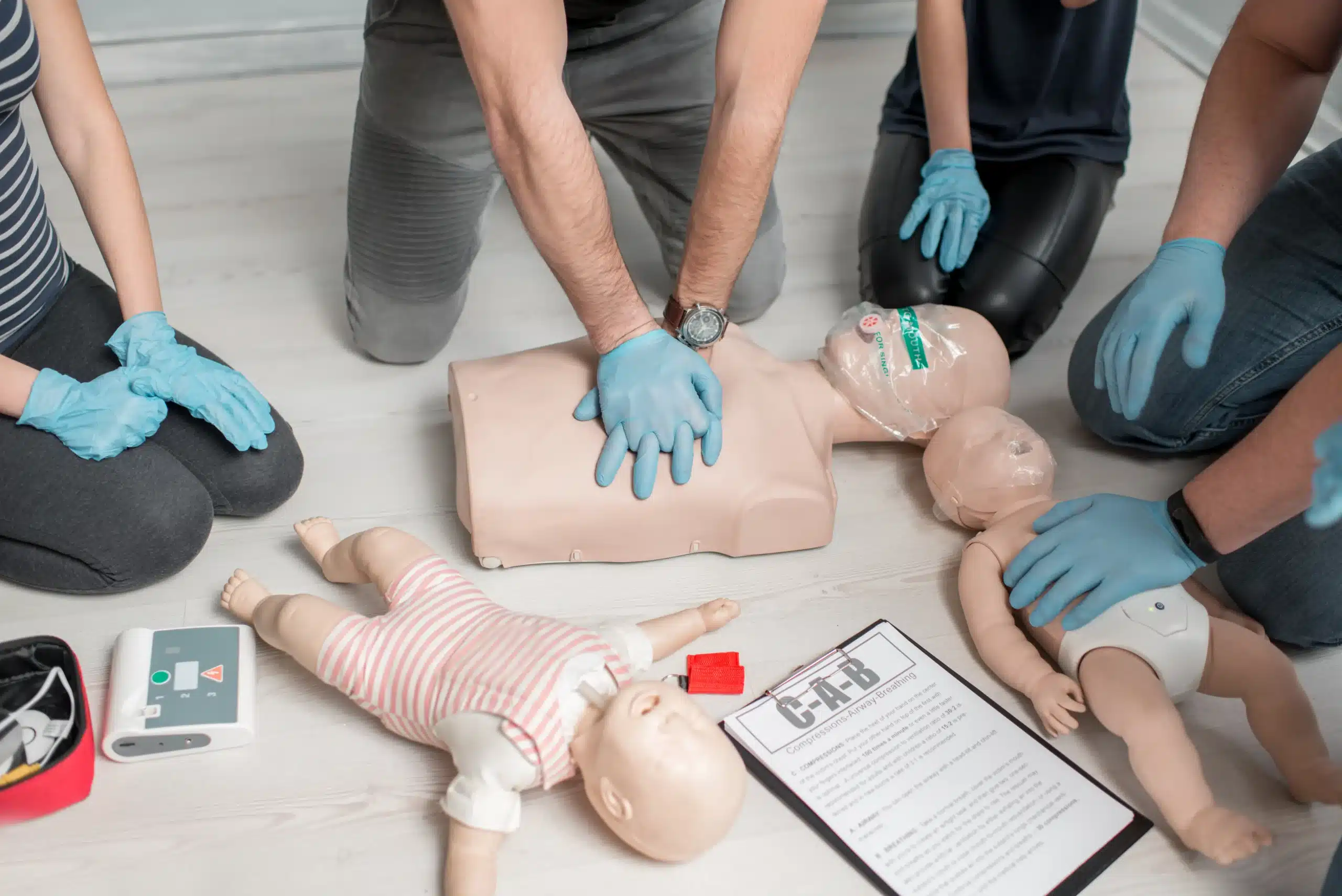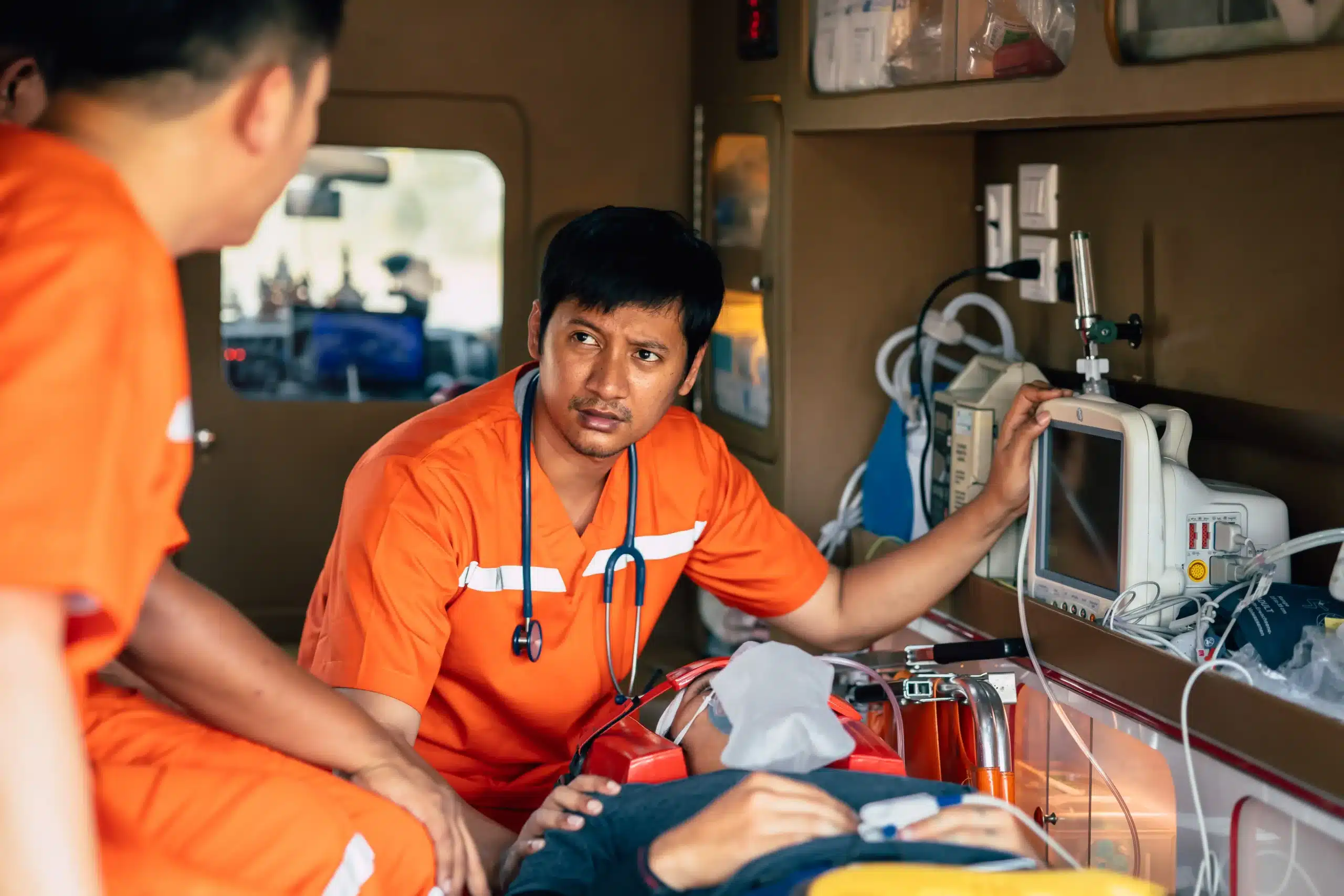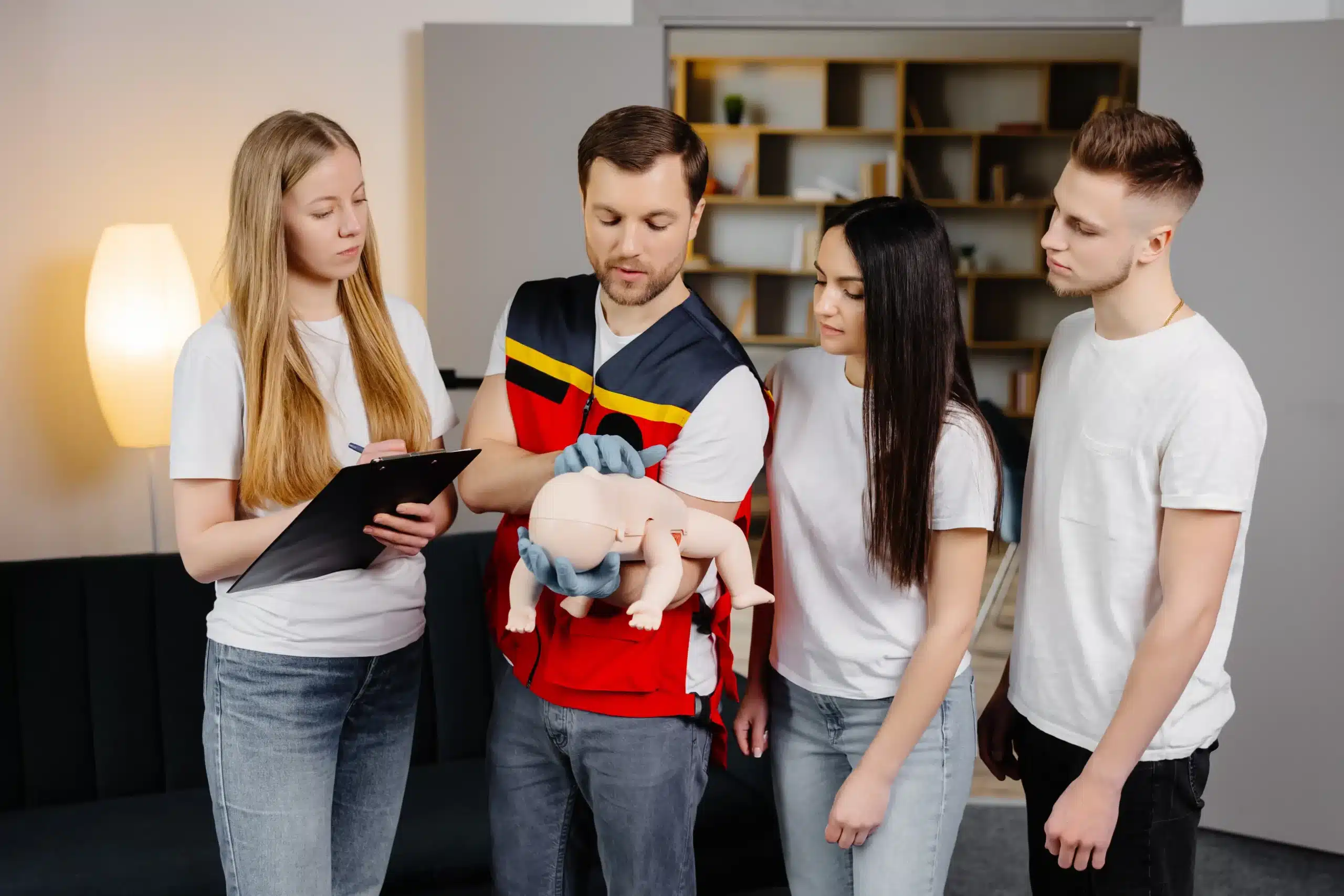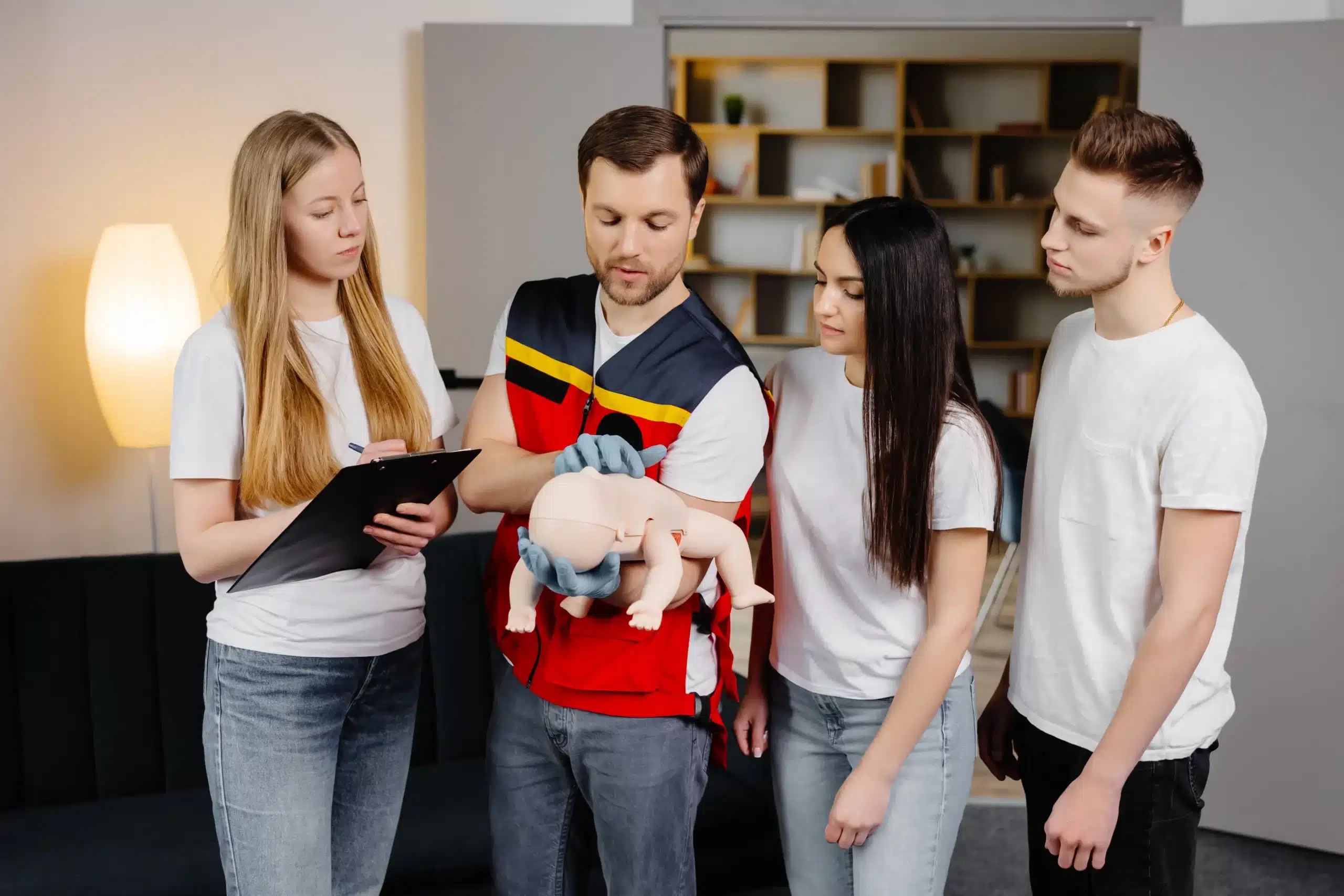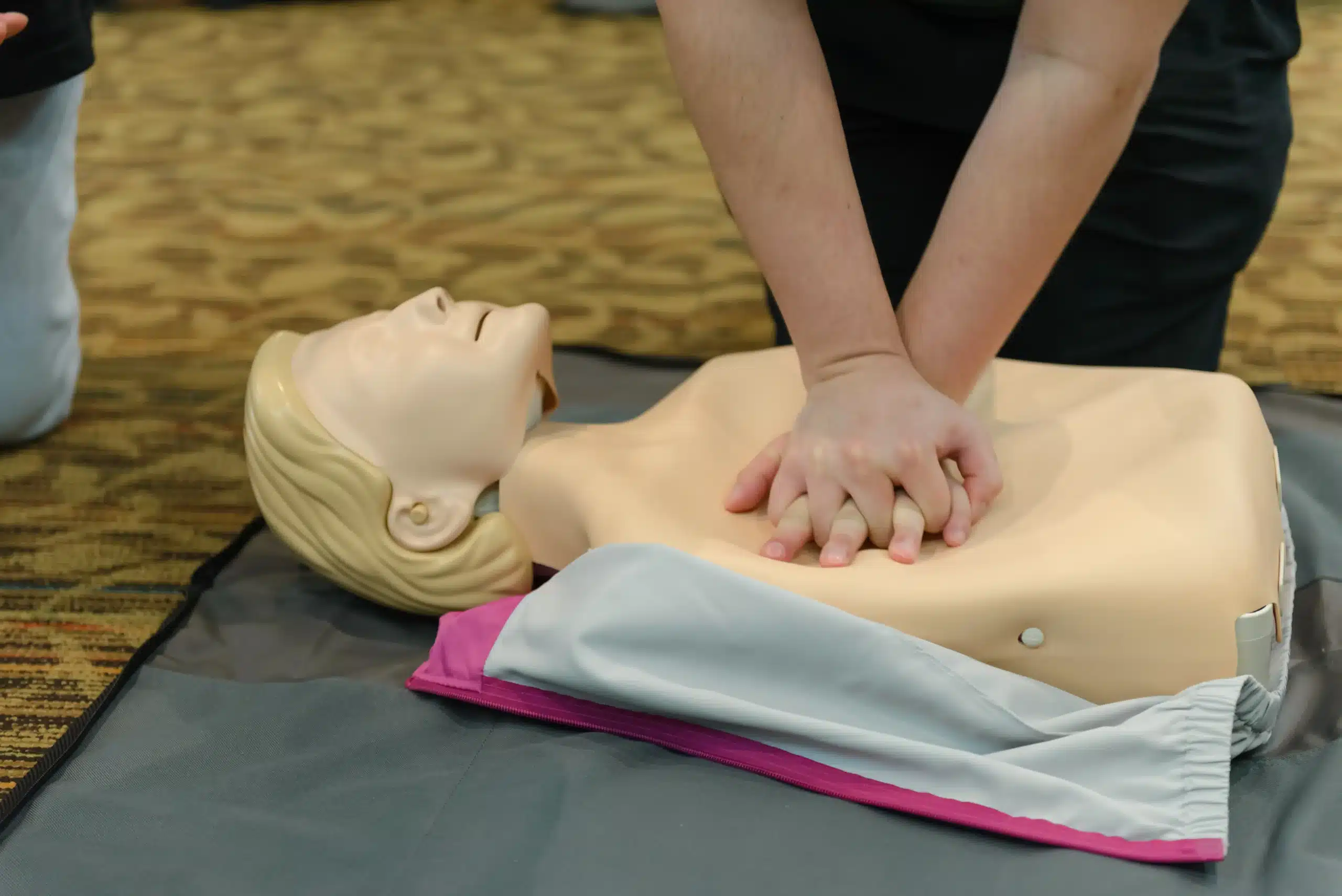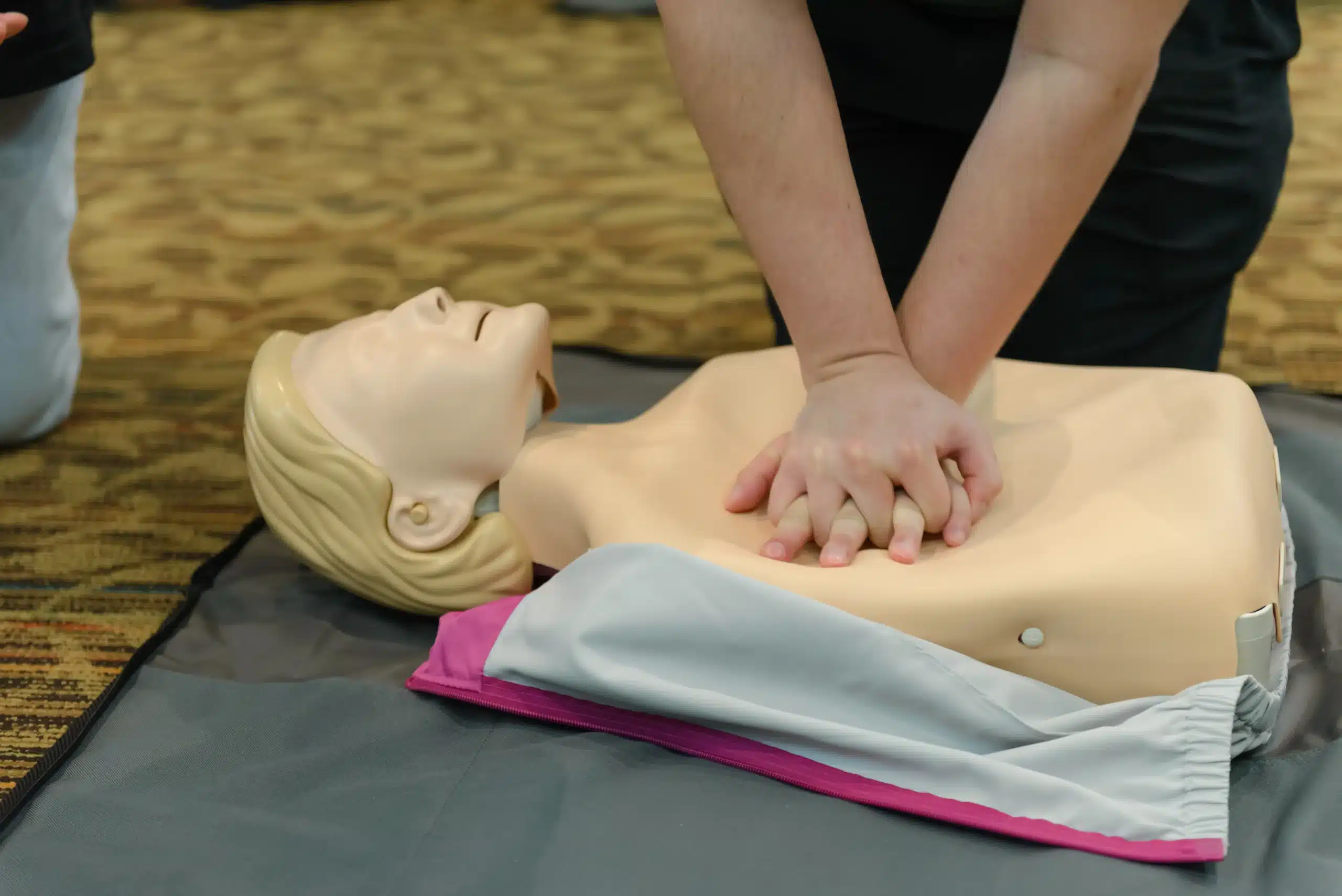BLS certification is more than just a credential; it’s a powerful tool that equips you to handle medical emergencies with confidence. This guide demystifies BLS, explaining its importance, key components, and who can benefit from training. We’ll also explore the diverse landscape of bls courses in SF, offering insights into different providers, course formats, and costs. Whether you’re looking to advance your healthcare career or simply want to be prepared for the unexpected, this guide will help you understand the value of BLS.
Key Takeaways
- BLS certification provides essential life-saving skills: It covers a range of techniques, including CPR, AED use, and airway management, empowering you to handle various medical emergencies.
- Choosing the right BLS course involves key considerations: Think about your learning style and schedule when deciding between in-person, online, or blended learning. Compare pricing and prioritize AHA-certified courses from reputable providers.
- Maintaining your BLS skills and certification is an ongoing process: Regularly renew your certification to stay current with the latest techniques and best practices in life support. Consistent practice ensures you’re always prepared for real-world emergencies.
What is BLS?
What is BLS and why is it important?
BLS stands for Basic Life Support. It’s a crucial certification for healthcare providers and anyone who might need to respond to medical emergencies. BLS equips you with the skills to assist individuals experiencing cardiac arrest, respiratory distress, or other life-threatening conditions. It’s not just about CPR; BLS covers a broader range of emergencies and teaches you how to assess situations and provide appropriate care. This training emphasizes early intervention and high-quality CPR, increasing the chances of survival. If you’re considering a career in healthcare, BLS certification is often a prerequisite.
Key BLS Training Components
BLS training typically includes CPR for adults, children, and infants, covering techniques like chest compressions and rescue breaths. You’ll also learn how to use an AED (automated external defibrillator), a portable device that can help restore a normal heart rhythm. The curriculum covers two-person CPR, allowing you to practice coordinated efforts during resuscitation. Additionally, you’ll learn how to use a bag-valve mask to provide ventilation support. Many BLS courses also incorporate training on relieving choking and basic airway management techniques. You can find BLS courses offered by Safety Training Seminars in San Francisco.
Who Needs BLS Certification?
While BLS certification is essential for healthcare professionals like doctors, nurses, and paramedics, it’s also highly beneficial for others. Anyone working in healthcare settings, such as dental offices or nursing homes, should consider getting certified. Other professions that often require or benefit from BLS certification include lifeguards, firefighters, teachers, coaches, and childcare providers. Even if it’s not mandatory for your job, having BLS skills can empower you to confidently respond to emergencies anywhere.
Common BLS Training Misconceptions
One common misconception is that BLS is the same as CPR. While CPR is a significant component of BLS, it’s not the entire picture. BLS encompasses a broader skill set, including the use of an AED and bag-valve mask, and emphasizes a systematic approach to patient care. Another misconception is that BLS certification is a one-time deal. Like many certifications, BLS requires renewal every two years to ensure your skills are up-to-date. Finally, some believe BLS is only for specific healthcare roles. However, a variety of professions and individuals can benefit from this training.
Top San Francisco BLS Course Providers
Finding the right BLS course provider is an important first step. Here’s a look at some of your options in San Francisco:
Safety Training Seminars
AHA Certification & Expert Instructors
Safety Training Seminars offers a comprehensive selection of American Heart Association (AHA) courses, including BLS certification. The benefit of in-person training is the immediate feedback you receive, allowing you to perfect your technique under the guidance of an expert.
Flexible Formats & Locations
Safety Training Seminars teaches AHA BLS, ACLS, PALS, NRP, CPR, and First-aid training throughout the San Francisco Bay Area and Sacramento. This flexible approach makes it easier to find a class that fits your schedule and location. They serve San Francisco, Daly City, San Mateo, and Oakland, CA.
Low-Price Guarantee & Daily Classes
They offer a low-price guarantee and have classes available daily, making high-quality training accessible. This commitment to affordability, combined with their frequent class schedules, removes barriers for those seeking these essential skills.
RQI Program Offerings
For healthcare professionals looking for a flexible and efficient way to maintain their BLS skills, Safety Training Seminars also offers the RQI (Resuscitation Quality Improvement) program. RQI is a self-paced program that allows healthcare providers to renew their certification on their own time.
American Red Cross
The American Red Cross is another well-known provider of BLS certification. Taught by experts, this certification is valuable for many jobs and provides a solid foundation in life-saving techniques.
Revive CPR
Revive CPR offers AHA-certified CPR, BLS, and First Aid classes in San Francisco. They focus on providing convenient and accessible training options for individuals and groups.
Other Local Training Centers
While the providers listed above are some of the most prominent, it’s always a good idea to research other local training centers. Safety Training Seminars, for example, has been in business since 1989 and offers classes in over 60 cities, demonstrating a long-standing commitment to the community. Look for providers who offer AHA-certified courses and have experienced instructors.
Choose the Right BLS Course
Finding the right BLS course means thinking about a few key things, from how the course is delivered to how much it costs. Let’s break down what you should consider to make a smart choice.
Course Formats & Durations
The best course format depends on your learning style and how much time you have. Here are the most common options:
In-Person Training
In-person BLS training gives you hands-on learning and direct interaction with instructors. The immediate feedback helps you perfect your technique and ask questions right away. Safety Training Seminars offers this interactive training at our locations throughout Northern California.
Online Options
Online BLS certification offers flexibility if you have a busy schedule or can’t easily get to in-person classes. It’s a convenient way to learn the material at your own pace, and it’s just as credible as in-person training. Many providers, including Safety Training Seminars, offer this option.
Blended Learning
Blended learning combines online coursework with in-person skills practice and testing. This format lets you learn the material online and then show your skills in person.
Costs & Pricing
BLS course costs can vary, so compare prices and look for discounts.
Average Price Range
BLS course prices typically depend on the provider and format. Check with different training centers for their current pricing. Safety Training Seminars is known for competitive pricing and a low-price guarantee.
Group Rates & Discounts
If you’re training with a group, ask about group discounts. Some providers, like Safety Training Seminars, offer discounts for group registrations, making it more affordable for workplaces or organizations. See our FAQ page for details on our low price guarantee.
Low-Price Guarantees
Look for providers with a low-price guarantee. This helps ensure you’re getting the best value. Safety Training Seminars offers a low-price guarantee, so you know you’re getting affordable training.
Benefits of BLS Certification
BLS certification has many professional and personal advantages.
Professional Advantages
For healthcare professionals, BLS certification is often required for employment and career advancement. It shows you’re committed to patient safety and quality care.
Personal Skill Development
BLS training gives you lifesaving skills you can use in different situations. It helps you respond confidently in emergencies and potentially save a life.
Community Impact
Getting BLS certified makes your community safer. You’ll be ready to help in medical emergencies, providing support until professional help arrives.
Evaluate Course Quality & Credibility
When choosing a BLS course, make sure it’s accredited by a reputable organization like the American Heart Association. Look for experienced instructors and updated course materials. Safety Training Seminars offers AHA-certified courses taught by expert instructors. We’re committed to providing high-quality, credible training.
Enroll in a BLS Course
Now that you understand the importance of BLS certification, let’s walk through how to enroll in a course. Safety Training Seminars makes registration straightforward, and we’re here to guide you.
Step-by-Step Registration
Finding the right BLS course is easy. Start by checking Safety Training Seminars’ class calendar for course dates and times. Our San Francisco location offers classes daily, giving you the flexibility to choose what works best. Once you’ve found a class, simply click to register and follow the prompts. You’ll receive a confirmation email with all the details.
Prerequisites & Materials
There are no prerequisites for taking a BLS course. Whether you’re a healthcare professional or just starting your first aid journey, you’re welcome to join. All required course materials, including your student handbook, are provided with your registration.
Course Content & Structure
Our BLS certification course covers essential life-saving techniques for adults, children, and infants. You’ll learn how to perform CPR, including chest compressions and rescue breaths, and how to use an AED. The course also covers choking relief and other critical first-aid skills. The program typically runs from 9 am to 4 pm.
Hands-on Practice
One of the most valuable aspects of our in-person BLS training is the hands-on practice. You’ll work with experienced instructors who provide personalized feedback, helping you refine your technique and build confidence. This practical experience is crucial for mastering BLS techniques and preparing you for real-life emergencies.
Certification Process & Validity
Upon successful completion of the course, you’ll receive your American Heart Association BLS certification. This nationally recognized certification is valid for two years. When your certification nears its expiration date, you can easily renew by taking a shorter refresher course. We offer convenient renewal courses to help you maintain your skills and credentials.
Maintain Your BLS Certification
Once you’ve earned your BLS certification, staying current is key. Knowing what to expect helps you prepare for renewal and continue confidently using your skills.
Renewal Requirements & Timelines
BLS certification is typically valid for two years. As your certification expiration date approaches, you can enroll in a renewal course. These are often shorter than the initial certification course, focusing on a refresher of essential skills and knowledge. Check with your certifying organization, such as the American Heart Association, for specific renewal guidelines.
Continuing Education
It’s important to remember that BLS certification isn’t a one-and-done deal. Regular renewal ensures you’re up-to-date on the latest techniques and best practices in cardiopulmonary resuscitation. This commitment to ongoing education reflects your dedication to providing high-quality care.
Stay Current with BLS Skills
The medical field is constantly evolving. BLS courses incorporate the most recent practices, so each renewal cycle is an opportunity to refine your skills and learn about any updates to guidelines. This ensures you’re always prepared to respond effectively in an emergency.
Apply BLS Skills in Real-World Scenarios
While maintaining your certification is essential, the true value of BLS lies in its real-world application. These skills empower you to respond confidently in emergencies, potentially saving lives. BLS training covers a wide range of situations, from cardiac arrest to choking, equipping you with the knowledge and skills to provide immediate care. Remember, regular practice and staying current with guidelines are crucial for effective BLS application.
Related Articles
- Advanced Cardiac Life Support (ACLS) in SF: Get Certified – San Francisco CPR Classes
- BLS for Healthcare Providers in San Francisco – San Francisco CPR Classes
- Find the Best BLS Classes in San Francisco – San Francisco CPR Classes
- BLS Certification in San Francisco: Your 2023 Guide – San Francisco CPR Classes
- Basic Life Support (BLS) in SF: The Ultimate Guide – San Francisco CPR Classes
Frequently Asked Questions
What’s the difference between BLS and CPR?
CPR (Cardiopulmonary Resuscitation) is a specific technique used within BLS (Basic Life Support). Think of BLS as the bigger picture. It includes CPR, but also covers using an AED, giving rescue breaths with a bag-valve mask, and understanding how to assess and manage different emergency situations.
How often do I need to renew my BLS certification?
BLS certification is typically valid for two years. To stay certified, you’ll need to take a recertification course before your current certification expires. These refresher courses are designed to keep your skills sharp and ensure you’re up-to-date on the latest guidelines.
What if I don’t work in healthcare? Do I still need BLS?
Even if you’re not a doctor or nurse, BLS training can be incredibly valuable. It equips you to handle emergencies at home, at work, or out in your community. Anyone can benefit from having these skills – teachers, coaches, parents, and even babysitters.
Are online BLS courses as good as in-person classes?
Online BLS courses offer a convenient way to learn the material, especially if you have a busy schedule. They cover the same information as in-person classes and are just as credible. However, keep in mind that you’ll still need to demonstrate your skills in person for the hands-on portion of the certification.
How do I find a reputable BLS course provider in San Francisco?
Look for providers offering courses accredited by recognized organizations like the American Heart Association. Check for experienced instructors, updated materials, and positive reviews. Safety Training Seminars is one option, but it’s always good to compare a few different providers before making a decision.


